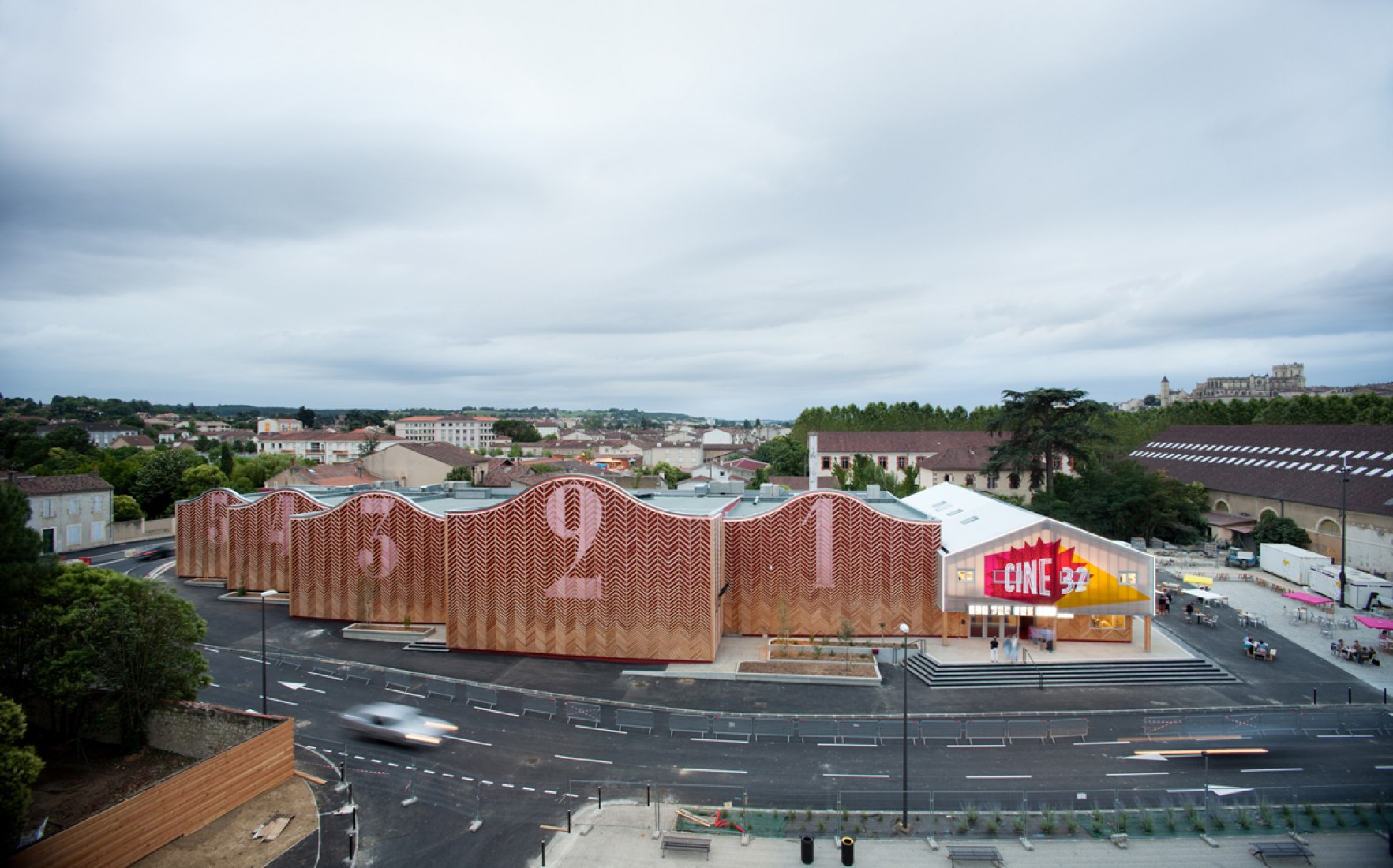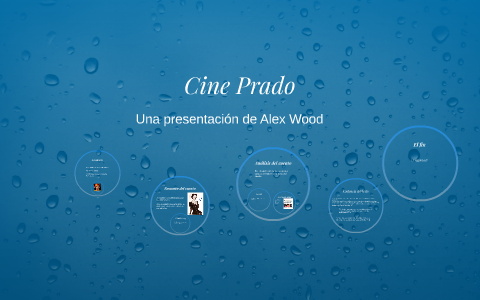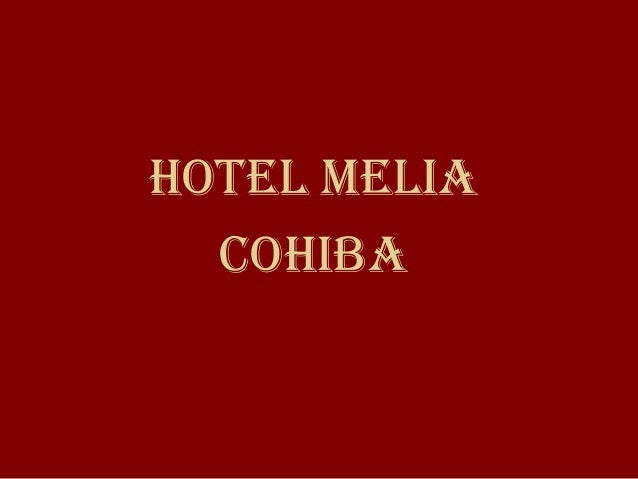The Name of the Rose (Italian: Il nome della rosa il ˈnoːme della ˈrɔːza) is the 1980 debut novel by Italian author Umberto Eco.It is a historical murder mystery set in an Italian monastery in the year 1327, and an intellectual mystery combining semiotics in fiction, biblical analysis, medieval studies, and literary theory. Introduces students to the techniques of literary analysis. “Cine Prado”, Elena Poniatowska. “De noche soy tu caballo”, Luisa Valenzuela. CINE PRADO ELENA PONIATOWSKA Cine Prado Sefrorita: A partir dei hoy, debe usted borrarz mi nombre de la lista de sus admi-radores. Talvez convendria ocultarle3 esta deserci6n, pero call6ndome, iria en contra de una integridad personal que jamds ha eludido las exi-s gencias de la verdad. Al apartarme de usted, sigo un profundo virajea de. Cine prado english eduhawks April 11, 2019 pay for college essay, we do your essays, write my book report Comments Off on cine prado english 394 Views Infinitely tired, Blas de Irmos moves his hand toward the head of the bed. Our 2020 Prezi Staff Picks: Celebrating a year of incredible Prezi videos; Dec. Prezi Video + Unsplash: Access over two million images to tell your story through video.
You can preview this product in two ways:
- Momentos cumbres de las literaturas hispánicas: Introducción al análisis literario
- ISBN-10: 0131401327 • ISBN-13: 9780131401327
- ©2004 • Pearson • Paper, 1030 pp
- Published 11/12/2003 • Out of PrintWe're sorry, this product is no longer available.
Please contact your Pearson rep if you are using this product and need instructor resources.
Description
More than an anthology, Momentos cumbres provides a method of teaching literary analysis, giving students the means to comprehend the text with abundant “pasos” (analytical steps). Structured around moments of extraordinary literary achievement, Momentos cumbres provides typical examples from both Spain and Latin America for each literary modality. Literary history and biographical information is provided in the text, and expanded more fully in the accompanying website.
- Emphasis on literary interpretations.
Gives students guidelines to understand the works presented.
- Typical works from different modalities—Provides works from particular literary movements.
Gives students a full range of forms of expression, allowing them to see the continuum of Western civilization and make references to other areas of study they are pursuing.
- Combination of Spanish and Spanish-American writers—Contained in the same chapter.
Allows students to see the cultural links between writers from both sides of the Hispanic world.
- Carefully thought-out “pasos” (steps)—Accompany each text in the anthology.
Introduces students to the techniques of literary analysis.
- One comprehensive text.
Provides students with a cost-effective text as they need only one book for both Spanish and Spanish-American survey courses.
- Two-prong structure—Interprets the text and probes the work profoundly.
Allows instructors to assign the first steps for homework and focus on the second for classroom discussion.
- Female voices—Contains a section devoted to the feminine voice in Spanish literature.
Provides students with more balanced coverage.
- Website and CD-ROM—Provide additional information on the literary period, the author, and graphic material related to the author and/or work.
Leads students to valuable resource material that includes dictionaries, maps, and annotated texts.
1. La Época Medieval.
2. El encuentro entre dos culturas.
3. La poesía del Renacimiento.
4. La prosa ficción del Siglo de Oro.
5. La comedia del Siglo de Oro.
6. El Barroco.
7. El Romanticismo y Sus Huellas.
8. El realismo y el naturalismo y su duración.

9. La poesía odernista y su inflencia.
10. La Generación del '98 en España.
11. El Vanguardismo y sus transformaciones.
12. La literatura de la Posguerra Civil española.
13. El “Boom” de la narrativa hispanomericana y su resonancia.
14. La voz femenina en la literatura contemporánea.

- Companion Website - momentoscumbres
- ISBN-10: 0131409581 • ISBN-13: 9780131409583
- ©2004 • Website • Live
- (origin) This online resource is available at no cost at http://www.prenhall.com/momentos/.
- More info | Students, buy access
- Instructor Resources
- Student Resources
- ›Websites and Online Courses
- eLearning & Assessment
- ›Websites and Online Courses

Cine Prado In English
- Companion Website - momentoscumbres
- ISBN-10: 0131409581 • ISBN-13: 9780131409583
- ©2004 • Website • Live
- (origin) This online resource is available at no cost at http://www.prenhall.com/momentos/.
- More info | Go to site
- Companion Website - momentoscumbres
- ISBN-10: 0131409581 • ISBN-13: 9780131409583
- ©2004 • Website • Live
- (origin) This online resource is available at no cost at http://www.prenhall.com/momentos/.
- More info | Students, buy access
Pearson Higher Education offers special pricing when you choose to package your text with other student resources. If you're interested in creating a cost-saving package for your students contact your Pearson Higher Education representative.
Nobody is smarter than you when it comes to reaching your students. You know how to convey knowledge in a way that is relevant and relatable to your class. It's the reason you always get the best out of them. And when it comes to planning your curriculum, you know which course materials express the information in the way that’s most consistent with your teaching. That’s why we give you the option to personalize your course material using just the Pearson content you select. Take only the most applicable parts of your favorite materials and combine them in any order you want. You can even integrate your own writing if you wish. It's fast, it's easy and fewer course materials help minimize costs for your students.
For more information: www.pearsonlearningsolutions.com/higher-education
Or download our brochure (PDF).

Explore our course catalogues and see how you can customize your own textbooks.
Custom Library
Cine Prado Analysis Definition
Our library is vast, and it's all at your fingertips. Create a custom book by selecting content from any of our course-specific collections. Here, you'll find chapters from Pearson titles, carefully-selected third-party content with copyright clearance, and pedagogy. Once you're satisfied with your customized book, you will have a print-on-demand book that can be purchased by students in the same way they purchase other course material.
Custom Publications
Browse through our list of published titles. These books are examples of original manuscripts created in partnership with local Custom Field Editors. They have been authored by instructors at specific campuses, but are readily available for adoption.
Pearson Learning Solutions will partner with you to select or create eBooks, custom eBooks, online learning courses, resource materials, teaching content, media resources and media supplements. Simply share your course goals with our world-class experts, and they will offer you a selection of outstanding, up-to-the-minute solutions.
For more information: www.pearsonlearningsolutions.com/higher-education/customizable-technology-resources
Or download our brochure (PDF).
Cine Prado Analysis Example
Pearson Learning Solutions offers a broad range of courses and custom solutions for web-enhanced, blended and online learning. Our course content is developed by a team of respected subject matter experts and experienced eLearning instructional designers. All course content is designed around specific learning objectives.
Cine Prado Analysis Definition
For more information: www.pearsonlearningsolutions.com/higher-education/customizable-online-courseware
Cine Prado Analysis Review
Or download our brochure (PDF).
Comments are closed.